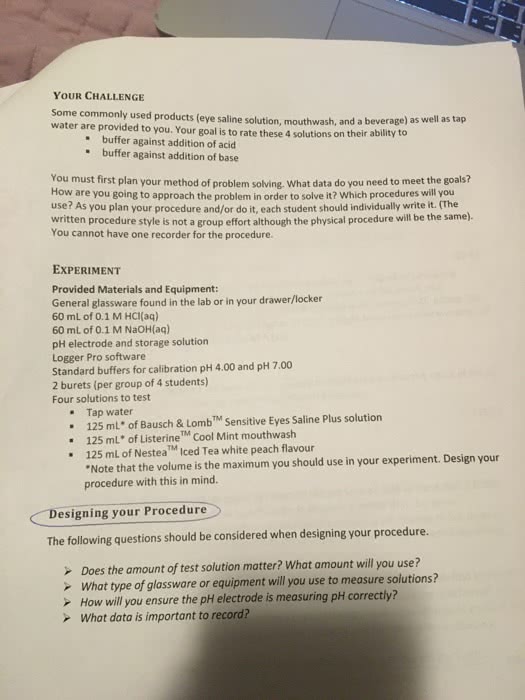01:160:307 Lecture Notes - Lecture 10: Organic Chemistry, Chemical Formula, Mass Spectrometry

1
CHAPTER 1
Problem Solving in Organic Chemistry
1.1 A General Approach to Problem Solving
By the time you reach Organic Chemistry, you’ve been solving homework
problems and exam problems for years. Yet it is not unusual to find students
solving Organic Chemistry problems incorrectly because of errors in their
approach to solving problems, rather than their lack of knowledge.
Almost every problem you will encounter in chemistry or other disciplines is
approached in pretty much the same way. Some aspects of the approach are almost
completely obvious, but students sometimes neglect them.
The first thing you do when you encounter a problem is size up the situation.
If it is a written problem you read it and decide what you have to do to solve it. In
order to make this decision, you must know what is being asked for and what is
being given. The next thing you do is decide how to go about doing what you have
to do to solve it, based on what is asked and what is given. Having decided what
you have to do and how to do it, you go ahead and solve the problem. Depending
on the problem, this step will require certain skills and certain facts. Finally you
look at your solution and check to make sure it makes sense and provides what the
problem asks.
Now for the details. Read the problem slowly and carefully. Determine
exactly what it is asking. Almost every problem has conditions stated or implied.
In the numerical problems that were so important in General Chemistry and that
you will also encounter, but to a lesser extent, in Organic Chemistry, the solution is
a number. You have to be sure exactly what number is being asked for, what its
units are, and how many significant figures it should have. Most of the problems
find more resources at oneclass.com
find more resources at oneclass.com

2
you will encounter in Organic Chemistry are nonnumerical ones. You have to
decide exactly what is being asked for and how it should be presented.
1.2 Memorization, Understanding, Skills, and Combining Them. Types of
Problems
You have no doubt heard about all the “memorization” that you will have
to do in Organic Chemistry. But, just as you can’t learn to speak a foreign
language simply by memorizing vocabulary words; you can’t learn what
Organic Chemistry is really about by memorization alone. Understanding
is critical as well. In addition, mastery of Organic Chemistry also
requires mastery of a number of skills. Problems are designed to help you
hone those skills or to allow your instructor to assess your mastery of the
skills. So when you start thinking about how to solve a problem, consider
what skill or skills you need.
Perhaps the first and most important skill you will need to master is
drawing structures, which is a skill that you learned to a limited extent in
General Chemistry. You should be able to describe organic molecules
using Lewis structures, based on preferred numbers of bonds and formal
charges. You should also be able to draw or interpret the range of
condensed structures, including line angle drawings that are used in
organic chemistry. Drawing structures is an essential part of using the
theory of resonance. So you should be able to draw important
contributing structures for resonance hybrids to explain and predict
properties of chemical species. Finally constitutional isomerism (different
compounds with the same formula) is a fundamental topic in Organic
Chemistry and you must be able to draw constitutional isomers when
given a formula.
Many problems ask you to draw the structures of one or more compounds
that fit a certain description. Be sure the compounds whose structures you
draw fit the description. Be sure you represent the structures in the way
the problem requires. You may be asked for Lewis structures (with or
without lone pairs), condensed structures, or line angle drawings. Other
problems may give you the structure of the compound and ask for its
find more resources at oneclass.com
find more resources at oneclass.com
Document Summary
By the time you reach organic chemistry, you"ve been solving homework problems and exam problems for years. Yet it is not unusual to find students solving organic chemistry problems incorrectly because of errors in their approach to solving problems, rather than their lack of knowledge. Almost every problem you will encounter in chemistry or other disciplines is approached in pretty much the same way. Some aspects of the approach are almost completely obvious, but students sometimes neglect them. The first thing you do when you encounter a problem is size up the situation. If it is a written problem you read it and decide what you have to do to solve it. In order to make this decision, you must know what is being asked for and what is being given. The next thing you do is decide how to go about doing what you have to do to solve it, based on what is asked and what is given.


